
The American Civil War was a civil war in the United States. It was fought between the Union and the Confederacy, the latter formed by states that had seceded. The central cause of the war was the dispute over whether slavery would be permitted to expand into the western territories, leading to more slave states, or be prevented from doing so, which was widely believed would place slavery on a course of ultimate extinction.

The National War College (NWC) of the United States is a school in the National Defense University. It is housed in Roosevelt Hall on Fort Lesley J. McNair, Washington, D.C., the third-oldest Army post still active.

Robert Edward Lee was a Confederate general during the American Civil War, towards the end of which he was appointed the overall commander of the Confederate States Army. He led the Army of Northern Virginia—the Confederacy's most powerful army—from 1862 until its surrender in 1865, earning a reputation as a skilled tactician.
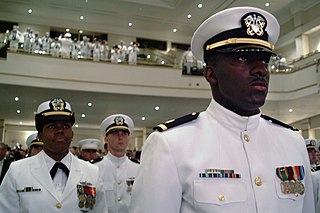
The Reserve Officer Training Corps is a group of college- and university-based officer-training programs for training commissioned officers of the United States Armed Forces.

The United States Army Command and General Staff College at Fort Leavenworth, Kansas, is a graduate school for United States Army and sister service officers, interagency representatives, and international military officers. The college was established in 1881 by William Tecumseh Sherman as the School of Application for Infantry and Cavalry, a training school for infantry and cavalry officers. In 1907 it changed its title to the School of the Line. The curriculum expanded throughout World War I, World War II, the Korean War, and the Vietnam War and continues to adapt to include lessons learned from current conflicts.

The Naval War College is the staff college and "Home of Thought" for the United States Navy at Naval Station Newport in Newport, Rhode Island. The NWC educates and develops leaders, supports defining the future Navy and associated roles and missions, supports combat readiness, and strengthens global maritime partnerships.
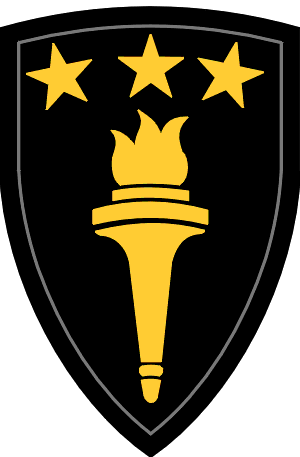
The United States Army War College (USAWC) is a U.S. Army educational institution in Carlisle, Pennsylvania, on the 500-acre (2 km2) campus of the historic Carlisle Barracks. It provides graduate-level instruction to senior military officers and civilians to prepare them for senior leadership assignments and responsibilities. Each year, a number of Army colonels and lieutenant colonels are considered by a board for admission. Approximately 800 students attend at any one time, half in a two-year-long distance learning program, and the other half in an on-campus, full-time resident program lasting ten months. Upon completion, the college grants its graduates a master's degree in Strategic Studies.
A war college is a senior military academy which is normally intended for veteran military officers and whose purpose is to educate and 'train on' senior military tacticians, strategists, and leaders. It is also often the place where advanced tactical and strategic thought is conducted, both for the purpose of developing doctrine and for the purpose of identifying implications and shifts in long-term patterns.

Oveta Culp Hobby was an American government official and businessperson who served as the first United States secretary of health, education, and welfare from 1953 to 1955. A member of the Republican Party, Hobby was the second woman ever to serve in a presidential cabinet.
Commandant is a title often given to the officer in charge of a military training establishment or academy. This usage is common in English-speaking nations. In some countries it may be a military or police rank. It is also often used to refer to the commander of a military prison or prison camp.

A colonel in the United States Army, Marine Corps, Air Force and Space Force, is the most senior field-grade military officer rank, immediately above the rank of lieutenant colonel and just below the rank of brigadier general. Colonel is equivalent to the naval rank of captain in the other uniformed services. By law, an officer previously required at least 22 years of cumulative service and a minimum of three years as a lieutenant colonel before being promoted to colonel. With the signing of the National Defense Authorization Act of 2019, military services now have the authorization to directly commission new officers up to the rank of colonel. The pay grade for colonel is O-6.

Carlisle Barracks is a United States Army facility located in Carlisle, Pennsylvania. The site of the U.S. Army War College, it is the nation's second-oldest active military base. The first structures were built in 1757, during the French and Indian War between Great Britain and France in the colonies.
Major is the lowest staff officer rank in the German Army, German Air Force. The rank is rated OF-3 in NATO. The rank insignia is a silver oakleaf cluster with a silver pip (star).

The Army Specialized Training Program (ASTP) was a military training program instituted by the United States Army during World War II to meet wartime demands both for junior officers and soldiers with technical skills. Conducted at 227 American universities, it offered training in such fields as engineering, foreign languages, and medicine.
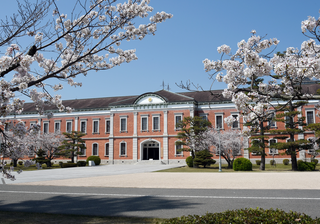
The Imperial Japanese Naval College was a school established to train line officers for the Imperial Japanese Navy. It was originally located in Nagasaki, moved to Yokohama in 1866, and was relocated to Tsukiji, Tokyo in 1869. It moved to Etajima, Hiroshima in 1888. Students studied for three or four years, and upon graduation were ordered (warranted) as Midshipmen, commissioned to the rank of Ensign/Acting Sub-Lieutenant after a period of active duty and an overseas cruise. In 1943, a separate school for naval aviation was opened in Iwakuni, and in 1944, another naval aviation school was established in Maizuru. The Academy was closed in 1945, when the Imperial Japanese Navy was abolished. The Naval Academy Etajima opened in 1956 and the site now serves as the location for Officer Candidate School of the Japan Maritime Self-Defense Force.
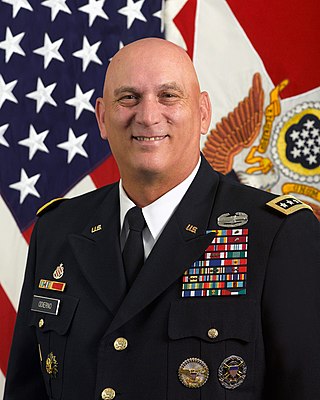
Raymond Thomas Odierno was an American military officer who served as a four-star general of the United States Army and as the 38th chief of staff of the Army. Prior to his service as chief of staff, Odierno commanded United States Joint Forces Command from October 2010 until its disestablishment in August 2011. He served as Commanding General, United States Forces – Iraq and its predecessor, Multi-National Force – Iraq, from September 2008 through September 2010.

Thomas B. Cahill was an American football player and coach who served as the head coach at the United States Military Academy from 1966 to 1973 and at Union College in Schenectady, New York from 1976 to 1979, compiling a career college football record of 51–59–3.
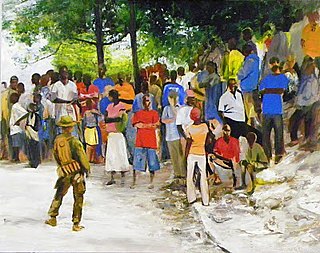
American official war artists have been part of the American military since 1917. Artists are unlike the objective camera lens which records only a single instant and no more. The war artist captures instantaneous action and conflates earlier moments of the same scene within one compelling image.
"We're not here to do poster art or recruiting posters... What we are sent to do is to go to the experience, see what is really there and document it—as artists."

Events from the year 1630 in Sweden

National Defence College is a government owned institution for the strategic training of civil and military officers and is located in Mirpur Cantonment, Dhaka, Bangladesh.
















